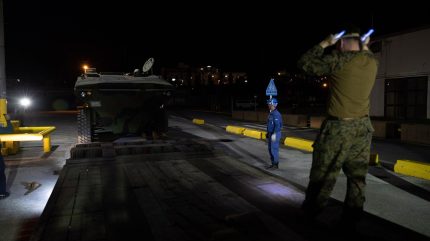
In a move to enhance operations in the Indo-Pacific region, the III Marine Expeditionary Force has welcomed a fleet of Amphibious Combat Vehicles (ACVs) to Okinawa, Japan.
This development marks an upgrade from the ageing Assault Amphibious Vehicles (AAVs).
The ACV, characterised by its eight-wheeled armoured design, represents an advance in amphibious warfare technology. Capable of transitioning from water to land operations, these vehicles are set to improve Marine Corps operations across environments
Lt. Gen. Roger B. Turner, commanding general of III MEF, emphasised the impact of the new vehicles, stating, “III Marine Expeditionary Force is a modern, ready force. Upgrading our fleet with amphibious combat vehicles capable of supporting sea denial and maritime operations will further bolster our ability to support deterrence efforts and respond to contingencies in the Indo-Pacific.”
The US Marine Corps (USMC) received its first amphibious combat vehicle command (ACV-C) variant from BAE Systems for testing in 2021.
The arrival of the ACVs at Naha Military Port on June 29, 2024, marks the beginning of the deployment process. Over the coming days, the vehicles will be transported to Camp Schwab, where Marines will undergo training to familiarise themselves with the ACVs’ capabilities. This rollout represents a long-anticipated enhancement to the Marine Corps amphibious assault capabilities, ensuring readiness to respond to crises and maintain stability in the region.
Within the last year, the US Marine Corps has signed a $211.5m contract with BAE Systems to procure 40 Amphibious Combat Vehicle (ACV) Personnel variants. This contract, part of a $2.5bn cumulative value, supports the Marine Corps’ plan to acquire 4,350 ACVs by 2040 at an estimated $22.3bn.



